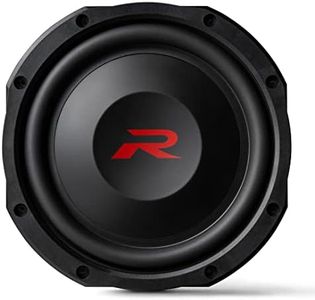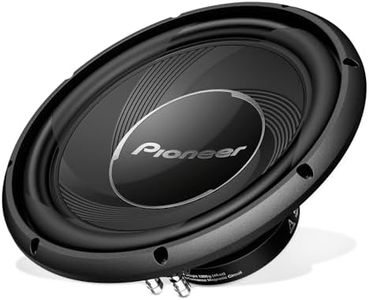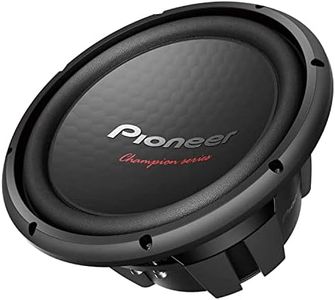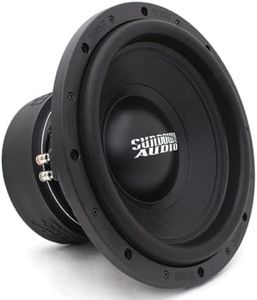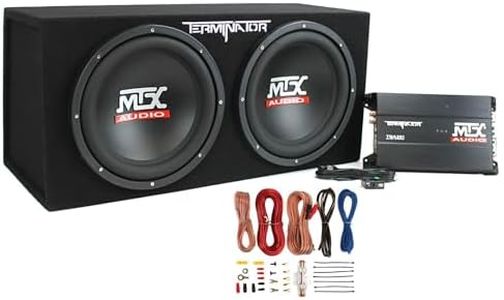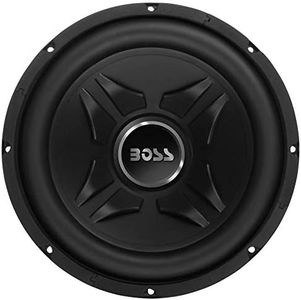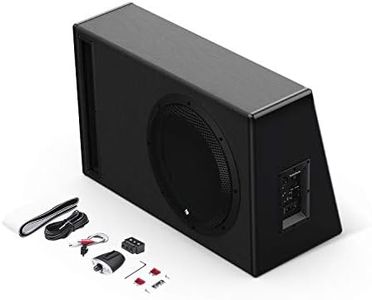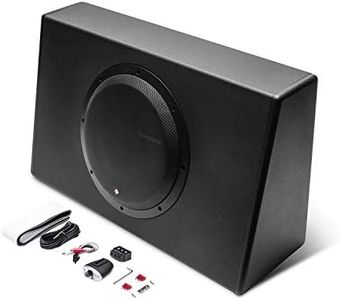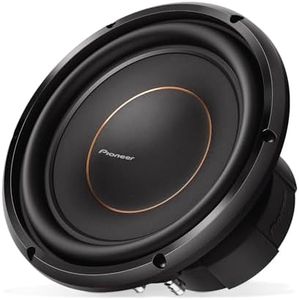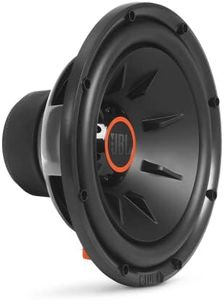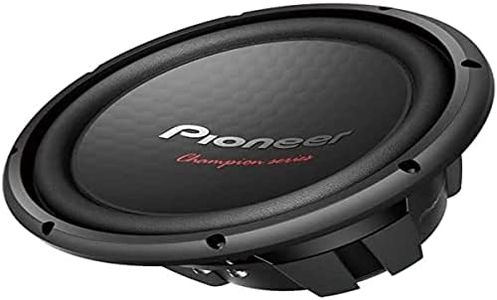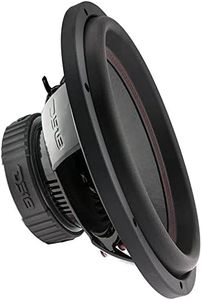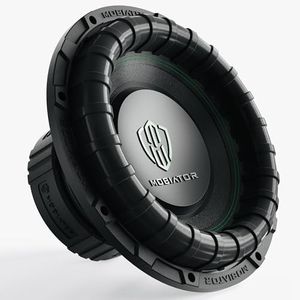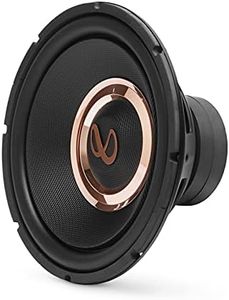We Use CookiesWe use cookies to enhance the security, performance,
functionality and for analytical and promotional activities. By continuing to browse this site you
are agreeing to our privacy policy
10 Best 12 Inch Car Subwoofers
From leading brands and best sellers available on the web.Buying Guide for the Best 12 Inch Car Subwoofers
Choosing a 12-inch car subwoofer can make a real difference in the quality of your car audio system. Before you buy, think about how you listen to music, the size of your vehicle, and how much bass you want. It’s important to understand that subwoofers add depth and impact to your music by reproducing low-frequency sounds that regular speakers can’t handle well. Understanding the main specifications will help you pick the one that’s best suited to your musical taste and usage.Power Handling (RMS and Peak)Power handling tells you how much power a subwoofer can safely handle from your amplifier, both as a continuous average (RMS) and in short bursts (Peak). RMS is more important for everyday use, as it shows the power level the subwoofer can handle for a long time without trouble. Lower RMS (around 100-300 watts) is good for lighter bass and casual listening, medium (300-600 watts) is best for balanced use, and higher RMS (600+ watts) is meant for powerful bass lovers who want strong impact. Choose based on how loud and deep you want your music. Make sure your amplifier matches the subwoofer’s RMS rating for the best and safest sound.
SensitivitySensitivity measures how efficiently a subwoofer turns power into sound, with higher numbers meaning louder sound from the same power. Measured in decibels (dB), subwoofers with a sensitivity of 84-87 dB are on the lower side, 87-90 dB are average, and 90 dB or higher are very efficient. If you have a lower-powered amplifier, a higher sensitivity rating will get you more bass without needing a lot of extra power. If you already have a powerful amp, a lower sensitivity is less of an issue.
Frequency ResponseFrequency response shows you the range of bass tones a subwoofer can play, often listed as the lowest to the highest frequency, like 20Hz–200Hz. The lower the first number, the deeper the bass it can reach. If you enjoy feeling those really deep rumbles, look for subs with a lower bottom end (around 20-30Hz). For general use, most music is well covered up to 40Hz. Think about your music style—some genres like hip-hop or electronic really benefit from subwoofers that can hit the lowest notes.
Impedance (Ohms)Impedance, measured in ohms, shows how much resistance a subwoofer gives to the amplifier’s power. Most 12-inch subwoofers are rated at 2 or 4 ohms. Lower impedance (2 ohms) means the subwoofer draws more power and plays louder, but puts more strain on your amp and may heat up faster; higher impedance (4 ohms) is easier on your amp but can be a bit less powerful. Pick the impedance that matches your amplifier’s recommendation—mixing them up can cause issues or limit your system’s performance.
Enclosure CompatibilityEnclosures are the boxes that house your subwoofer, and the type you use (sealed, ported, or bandpass) changes how the bass sounds. Sealed enclosures give tighter, more precise bass—great for all kinds of music and everyday use. Ported (or vented) enclosures are louder and boomier, perfect for bass-heavy music fans, while bandpass enclosures are super loud but only across a small range of frequencies. Make sure the subwoofer you’re looking at is designed for the type of enclosure you have or want, as this affects sound quality and space in your car.
Mounting Depth and SizeMounting depth tells you how much space you need behind the subwoofer to install it—important if your car has a shallow trunk or tight spaces. Shallow-mount subwoofers fit in small places, while standard ones need more room but often produce deeper bass. Always measure your available space in your car before buying, so you pick a subwoofer that fits properly.
